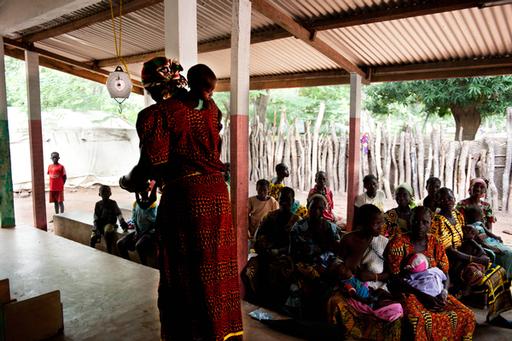Médecins Sans Frontières calls for a national and international response to the crisis.
The Central African Republic (CAR) is in the grip of a chronic medical emergency. Four mortality studies conducted by Médecins Sans Frontières (MSF) in the past 18 months reveal crude mortality ratesThe "crude mortality rate" is used to define a humanitarian crisis. The emergency threshold is above one death per 10,000 people per day (World Health Organisation) in some regions are at three times the emergency threshold level, which is considered a humanitarian crisis. These rates constitute an “out of control” situation, even though the areas with the highest mortality rates are not affected by conflict or a high number of displaced people.
In a new report entitled, “Central African Republic: State of Silent Crisis” MSF concludes that existing levels of medical assistance are not enough to meet the scale of the medical needs. The report outlines the need for more actors, conducting larger medical operations that reach more of the population.
The Central African Republic has the second lowest life expectancy in the world at 48 years, and the fifth highest death rate from infectious and parasitic disease. In much of CAR mortality rates are the result of seasonal epidemics, economic downturns, as well as conflict, displacement, and a poor health system.
"A health system torn apart by years of political and military instability, major organisational problems, and a lack of security in the northern and eastern regions of the country... All these factors have had a catastrophic effect on the health of the population and show, to a large extent, how the extremely high mortality rates have come about,” says Olivier Aubry, MSF Head of Mission in CAR. “For example, last July, in Carnot, the under- five mortality rate was three times as high as the under-five mortality rate in Kenya’s Dadaab refugee camp, where people who fled from Somalia live in dire conditions. In Carnot, the crisis was unknown.”
And yet, the report argues the commitment by the government and by the international community is going in the wrong direction. The government has been scaling down its investments in health, as have international donors, while humanitarian assistance has failed to reduce the widespread medical crisis. Despite the great need, both the government and international donors appear to be disengaging from health provision in the country.
And the need for more medical assistance is great, according to patient Monkoj Pascal, “if I had not been treated, with the help of MSF, I would be dead by now. I had diarrhoea and a migraine so I went to a doctor in Batangafo and he referred me to the lab for clinical tests. The result confirmed I was HIV positive. With treatment I am no longer a sick person, I am happy, and I no longer worry about anything.”
MSF calls on all actors, including the government and the international community, to expand assistance provided to the health of the country’s people. If old models of assistance have not worked, then new models must be found.
Médecins Sans Frontières has been working in the Central African Republic since 1997 and, at the end of 2010, had 1,243 staff present in the country. MSF missions support nine hospitals and 36 health centres and health posts. In almost all cases, MSF works in Ministry of Health facilities, seeking as close cooperation as is possible. In 2010, 582,253 people were treated as outpatients and 24,185 people as inpatients in the country.




